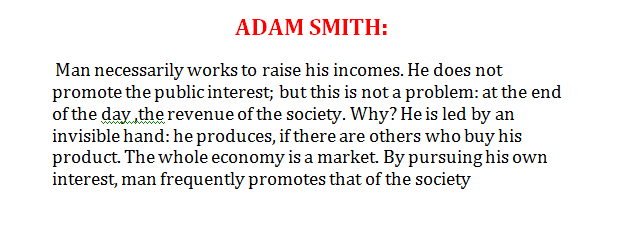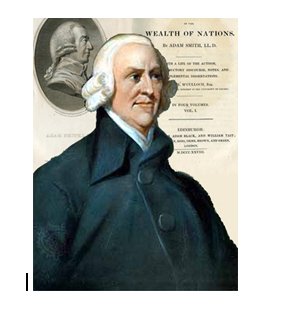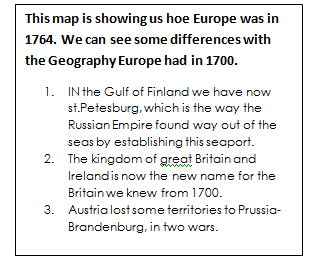James Watt--> Steam engine
James Watt was a great Scottish engineer of the 18th century. He did not actually invent the steam engine. Instead he greatly improved it. A man named Thomas Savery invented the first primitive steam engine in 1698. However Watt is famous for inventing an improved version in 1769.
James Watt was born in Greenock on 19 January 1736. His father, also called James was a shipbuilder. As a boy Watt went to the local grammar school where he learned the classics and mathematics. However Watt also liked making models.
Eventually James decided to become a maker of mathematical instruments such as quadrants and compasses. In 1755 he went to London. In 1757 Watt moved to Glasgow. In 1764 Watt mended a model of a Newcomen steam engine. In a Newcomen engine steam is admitted into a cylinder then condensed back into water. In 1765 Watt realized it would be more efficient to condense the steam in another chamber separate from the cylinder.
Meanwhile in 1764 James Watt married a woman named Margaret Miller. The couple had 6 children but Margaret died after 9 years.
His steam engines were used for pumping water out of mines and gradually he became a wealthy man.
By 1780 the Industrial Revolution was beginning to transform life in Britain and Watt adapted his steam engine to provide a rotary motion so they could be used to power machines in the new factories. In 1785 steam engines were used to power machines in cotton mills for the first time.
In 1785 James Watt was elected a fellow of the Royal Society.
James Watt retired from business in 1800. Watt died on 25 August 1819 and he was buried in Birmingham. Finally in 1882 a unit of electrical power was named the watt in his honor.
Samuel Morse--> Electric Telegraph
- Samuel Morse (April 27, 1791 - April 2, 1872) was an American painter and inventor who is best remembered today for his invention of single-wire telegraph system and the co-inventor of the Morse code - method of transmitting textual information as a series of on and off tones. His discovery soon changed the way the messages are sent and received in entire world, and even today Morse code is still in use in various areas of radio communications.
- During the several next years he married Susan Walker Morse which gave him three children. During the painting of Lafayette's portrait Samuel received the message of his wife's sudden illness. Samuel rushed to from the Washington to his home in New Haven, only to find that his wife Susan Walker Morse (aged 25) has died few days later while he was on his journey. Devastated by this new sand the inability of the current message system to give him news faster, he started devising a plan to create new way of fast long distance communication.
- After witnessing Thomas Jackson's many experiments with electromagnet, he designed first telegraph and submitted his findings to the US patent office.
- Inability of sending information to great distance came to end when he received help from the New York University's Professor Leonard Gale. With his help Morse was able to send information over the distance of 10 miles. Encouraged by this discovery Morse started planning first public demonstration of his system. With the financial help of the machinist and inventor Alfred Vail he organized public showing on January 11, 1838 at the grounds of the Speedwell Ironworks factory. Without an additional power source his telegraph had the ability to send messages over two miles.
Thomas Crapper--> Flush toilet
Crapper was an engineer who is credited with the invention of the flushing toilet and adding the word crap to the English language.
Crapper was born in Waterside, Yorkshire in 1836, the son of a steamboat captain. At the age of fourteen, Crapper was apprenticed to a plumber in Chelsea, where he served as a journeyman.
In 1861, Crapper started his own business in London, called Thomas Crapper and Co. The company manufactured sanitary ware, bathroom fittings and in particular the flush toilet, which made the firm famous. The merchandise was noted for its quality and value, and the company thrived. The products became regular household items throughout the country. Some ‘Crapper’ manhole covers may be seen today in Westminster Abbey.
The firm drew the attention of the Royal Family, and Crapper was commissioned to fit out the Royal country house of Sandringham with thirty water closets with ceder wood seats. The company enjoyed Royal patronage even after Crapper’s death and obtained several Royal Warrants.
The assumption that Crapper invented the flushing toilet in untrue. The device was created by Sir John Harrington a courtier of Elizabeth I, who had a ‘john’ built at the palace. It was developed by Alexander Cummins, whose device allowed a modicum of water to remain in the bowl to prevent seepage from the sewers.
Crapper did popularize the loo and made it an accepted domestic fixture. The notion that Crapper gave his scatological name to faces is just crap. The word ‘crap’, according to the Oxford English Dictionary, derives from the Middle English ‘crappe’, meaning chaff or residue from rendered fat.
Crapper died in 1910.
Cornelius Van Drebbel--> Submarine
As an adolescent Drebbel was apprenticed to an engraver but soon developed an interest in alchemy and mechanical inventions. In 1598 he was granted a patent for a perpetual motion machine which reportedly used changes in atmospheric pressure to power a clock. This "invention" is thought to have established Drebbel's fame in scientific and aristocratic circles in Europe.
Around 1604 he journeyed to England, where he was awarded an annuity by King James I (1566-1625) to continue his scientific work.
During the early 1620s Drebbel designed and built his most famous invention,the submarine. Although a similar design had been described some fifty years earlier, Drebbel's is the first known to have been constructed. Consisting mainly of greased leather stretched over a wooden frame, Drebbel's submarine was propelled by oars projecting through the sides and sealed with leather flaps. The vessel was capable of traveling twelve to fifteen feet (3.6 to 4.5 meters) below the surface, and fresh air was supplied by tubes running to the surface with floats at the top. Drebbel successfully tested his submarine several times in the Thames River in England.
Leonardo da Vincci--> parachute
Leonardo da vinvi actually conceived the parachute idea a few hundred year earlier.
Da Vinci made a sketch of the invention with this accompanying description: "if a man have a tent made of linen of wich the apertures have all been stopped up, and it be twelve braccia ( about 23 feet) across and twelve in depth, he will bw able to trhow himself down from any great height without suffering any injury". Like many of da Vinci’s ideas, the invention was never actually built or tested by Leonardo himself. But, in 2000, daredevil Adrian Nichols constructed a prototype based on da Vinci’s design and tested it.
Despite skepticism from experts, da Vinci’s design worked as intended and Nichols even noted that it had a smoother ride than the modern parachute.
Baron Karl von Drais--> Bicycle
Baron von Drais Karls Sauerbronn or Karl Drais was born on 29 April 1785 in Karlsruhe, Germany, he was a German inventor and find Laufmaschine also later called the velocipede, or draisienne. It then entered a two-wheeler principle that later became the basis for the bicycle and motorcycle and was the beginning of mechanical private transport. Drais studied architecture, agriculture and physics at the University of Heidelberg.
Drais successfully perform an important breakthrough, which proved to be the foundation stone of the development of the next cycle. By Von Drais, Hobby Horse modified until it has a steering mechanism on the front wheels. shape velocipede, an early form of bicycle, but without pedals. Reported first journey, from Mannheim to Schwetzinger Relaishaus took place on June 12, 1817.
Draisienne bike did not last long, because after that, began to emerge a new bicycle types are more efficient and even some of them are already using the pedal, although the pedal is still not perfect as a bike today. Even so, the bike was made Baron von Drais remains to be thumbs up, because it was able to be a milestone in the emergence of modern bikes in the world.
Dominique Jean Larrey--> Ambulance
Dominique Jean Larrey is usually given credit for "inventing" the ambulance. He was chief surgeon of Napoleon's army and was thoughtful enough to bring his operating room with him to the battlefield in the event a high ranking officer was wounded.
In the US, ambulances didn't really become widespread until after WW II. Although horse drawn ambulances did exist in major cities as early as the late 1800's.
The real quantum leap forward came in the late 1960's and early 1970's with the establishment of Advanced Life Support ambulances beginning to reach most of the U.S. Population. This happened when we realized that our GIs were getting better care on foreign battlefields than there families were on the highways back home.
EMS continues to evolve, always looking for improvement.
Johannes Gutenberg--> Printing press
In 1041, movable clay type was first invented in China. Johannes Gutenberg, a goldsmith and businessman from the mining town of Mainz in southern Germany, borrowed money to invent a technology that changed the world of printing.
Johannes Gutenberg invented the printing press with replaceable/moveable wooden or metal letters in 1436 (completed by 1440). This method of printing can be credited not only for a revolution in the production of books, but also for fostering rapid development in the sciences, arts and religion through the transmission of texts.
Fox Talbot--> Photograph
The first photographic technologies were produced during the 1830s and 40s. The invention of photography would revolutionize culture and communication in the West forever. For the first time, images of ‘real’ life could be captured for posterity and sent around the world. Portraits of royalty and other celebrities (far more accurate than paintings) allowed members of the public to feel they were viewing these people ‘in the flesh’. The dead could be remembered, the fleeting could be fixed.
The British inventor Fox Talbot produced his first successful photographic images in 1834, without a camera, by placing objects onto paper brushed with light-sensitive silver chloride, which he then exposed to sunlight. By 1840, Talbot had succeeded in producing photogenic drawings in a camera, with short exposures yielding an invisible or ‘latent’ image that could be developed to produce a usable negative. This made his process a practical tool for subjects such as portraiture and was patented as the calotype in 1841. The calotype shown here is from 1842. Talbot’s negative-positive process formed the basis of almost all photography on paper up to the digital age.
Louis Braille--> Braille
LOUIS BRAILLE (1809–1852) was born in Coupvray, a town in north central France, on January 4, 1809. At the age of three, he accidentally blinded himself in one eye with a stitching awl taken from his father's leather workshop. His other eye went blind because of sympathetic ophthalmia, an inflammation of both eyes following trauma to one.1
When he was 15, he invented a universal system for reading and writing to be used by people who are blind or visually impaired that now bears his name. He published the first Braille book, Method of Writing Words, Music, and Plain Songs by Means of Dots, for Use by the Blind and Arranged for Them, in 1829, at age 20.2 A talented musician, he also developed a Braille musical codification.
As an adult, Braille became the first blind apprentice teacher at the New School for the Blind in Paris, France. There, he taught algebra, grammar, music, and geography. He later became the first blind full professor at the school. Braille saved enough money from his teaching position to buy himself a piano so he could practice whenever he wished. Despite his small salary, he also made many personal gifts and loans to his students to help them purchase warm clothing and other necessities. Braille developed tuberculosis in his mid-20s, and for the rest of his life had periods of health interspersed with times of pain and illness.






























